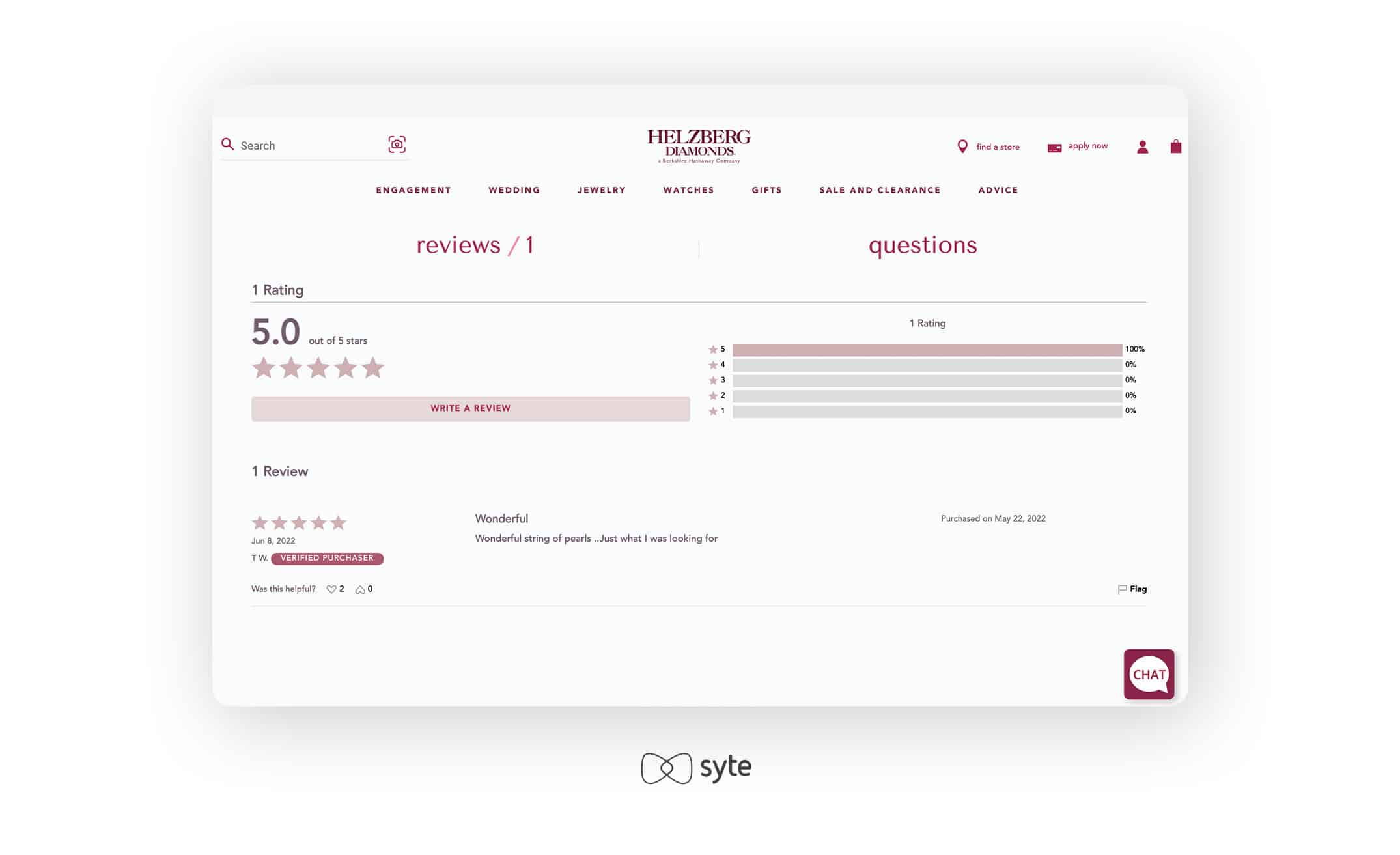2022 is proving to be a year of uncertainties and surprises – not so different from the two previous years. With global consumer demand threatening to fall and shoppers tightening their belts due to inflation, e-retailers have to work harder to guarantee success. While you can’t make your business 100% recession-proof, here’s what growing eCommerce companies can do to create innovative, conversion-focused experiences for your customers.
Offering an outstanding customer experience (CX) is crucial for brands of any size to stand out in a crowded online retail market. Here are six steps to keep the focus on growth, no matter what’s going on in the global economy.
- Inspire brand loyalty
We know that returning customers buy more and buy more often, so stickier customers are worth working for. And it doesn’t need to be a big investment in time or money. An email offering early access to new products can be a great start (and it’s free!).
Another way to differentiate your brand and keep customers returning is to offer a content library on your site, with trend alerts, personalized style consults, or interactive quizzes. Engaging with them on your social channels is another great way to earn loyalty and trust.
Take into account that different generations are motivated by different values. According to respondents to a PwC customer loyalty survey, members of Gen X and Baby Boomers care the most about good value and product quality, while Millennials and Gen Z appreciate fast service and personalization.
More than half of respondents to the survey also said they’re less likely to be loyal to a brand if its online shopping experience isn’t as easy or enjoyable as shopping in person.

- Diversify your marketing spend
Given today’s rising customer acquisition costs, it’s a good idea to have a lot of eggs in a variety of baskets. Syte’s report on The State of eCommerce Discovery 2022 found that 49% of fashion shopper sessions between January and June 2022 originated from direct visits (inputting the URL into the browser or clicking a bookmark). This leaves half arriving from a variety of paid and organic sources. Google Analytics can help you determine which channels your customers prefer, so you can make the most of your marketing dollars. If you use Shopify or a similar platform, you can enable Google Analytics to track and measure specific goals through your account.
Making your store SEO-friendly is the key to generating organic traffic. Google has a free keyword planner that many small businesses use to discover the most desired keywords for their market niche and how much it would cost to target them. The higher the ranking, the better. The ultimate SEO win is your site showing up on the first page of search results.
- Show Up Where Your Customers Shop
Where and how people shop has changed more in the past two years than ever before. Make sure your CX is at peak performance in all the places your customers are looking to buy.
In The State of eCommerce Discovery 2022, we found that purchasing on mobile is more popular than desktop computers. This holds true across jewelry, home decor, and fashion verticals. Make sure your site is mobile-optimized so you don’t lose this valuable audience segment. Features to look out for include: easy-to-read fonts, mobile-friendly images, responsive design, text formatting, and touch-screen optimized buttons.
If inspiration hits while shoppers are on their social accounts, Syte lets you show up there too. Syte’s Discovery Stories gives your eCommerce site a familiar interface, just like viewing stories on social media. It’s an easy and interactive way for mobile shoppers to discover new products, all in a shoppable story format.

Omnichannel experiences has become the most recent buzzword. “It’s a given that customers expect to find and engage with your brand on more than one channel,” says Syte CEO Vered Levy-Ron. “But the way to determine which channels, how to engage, and how much is to start with your customers—by leveraging deep insights about the tastes, habits, and preferences of each customer segment.”
In-store solutions like smart mirrors can help shoppers locate items they’d like, even if the items are not in stock in the physical store. Smart tablets, used by in-store stylists, are connected to the store’s eCommerce site and can interface with mobile devices, so customers can easily find another path to purchase the clothes they tried on at the store.
- Leverage social proof
Social media is a great place to build a loyal and active community for small to medium brands, organically (ie free). Don’t worry if you don’t employ an in-house social media expert. Being scrappy and taking risks is acceptable on social media, and a great way to find out what works and what doesn’t. There are also some excellent free courses and resources out there to help small businesses succeed on these platforms. For example, Twitter just rolled out 10 new courses targeted for small to medium businesses, with topics like How to Up Your Tweet Game, Creating a Community of Engaged Followers, and Keeping it Simple: The 4 Cs of Content Strategy.
Another tip to showing up on social media is making sure your messaging is authentic. Care about what your customers care about – whether it’s sustainability, a great product discovery experience, or free shipping. You can achieve this by using data you’ve collected on your customers’ personas and preferences.
User-generated content (UGC) also falls under social proof, and it’s one of the strongest tools you have to convert potential customers. Showcasing rave product reviews on your site can be your best advertising (at no cost to you!). Satisfied shoppers might discuss your excellent customer service, fast shipping, or high product quality.

- Reduce shopping friction
Cart abandonment is one of the biggest plagues to all eCommerce sites, small and large alike.
There are many reasons people abandon carts – they could get annoyed at an unwieldy registration process, be surprised by a substantial shipping fee, or have trouble inputting their credit card. Shopping on mobile grows more popular every year (in fact, nearly three out of every four eCommerce dollars is spent through a mobile device). A site that is not set up for easy purchasing on mobile will be another path to exit for frustrated shoppers (we’re talking about legible navigation, easy-to-view lists and perfectly placed CTAs).
Online shoppers have become more savvy — and more demanding. Few will have patience for a slow-loading page, confusing navigation, or a poor customer experience. Remove these barriers by simplifying your checkout process as much as possible, and providing all the information shoppers may need upfront, without needing additional click-throughs.
But even when it happens, shopping cart abandonment gives you a great opportunity to re-engage these at-risk and lost shoppers. You can send a cart reminder email with personalized product recommendations a few hours later, and throw in an extra discount or giveaway to sweeten the deal.
- Fine-tune your product discovery process
Today’s shoppers want what they want, when they want it. No one has time for an endless scroll of flowered skirts. If you can serve up the right products to your customers with a quick and easy checkout process, you’ll earn a shopper who’s loyal for life AND tells her friends.
There are many ways to eliminate decision fatigue for the time-pressed or impatient shopper. Syte’s visual AI product discovery solutions like Camera Search and Shop Similar recommendation engines prompt journeys that end in success for shoppers. We’ve helped eCommerce brands create hundreds of success stories for adopters of visual search technologies.
When sports brand Decathlon implemented Syte’s Camera Search and Recommendation Carousels, the company customized its merchandising rules so shoppers could search the vast inventory more effectively. This change drove significant uplifts in AOV and sales, as well as increases in engagement and click-through rate on the Syte Inspiration Gallery.
The customer experience experts at Mobly, a Brazil-based home decor e-tailer, recognized early that their shoppers needed more visual inspiration, but they lacked the tools to create an engaging journey. Mobly easily integrated Syte on their desktop and mobile websites and app with a plug-and-play implementation. The company quickly saw its conversion rate skyrocket. After an initial success with Syte’s Camera Search capabilities, Mobly added Syte’s Discovery Button, enabling shoppers to continue browsing visually similar items on product listing and display pages. After running an A/B test on the Discovery Button, Mobly found that this inspiration-led product discovery tool alone increased conversion site-wide.
Takeaways
Giving your customers the best experience is this year’s key to successful eCommerce performance. Brands with a smaller staff or fewer resources needn’t worry. Forward progress doesn’t have to involve a lot of staff time or expensive redesigns. Small changes can make a big difference. Seize the opportunity to engage with your customers in an authentic way in every channel, and you’ll see measurable results – and customers who come back for more.